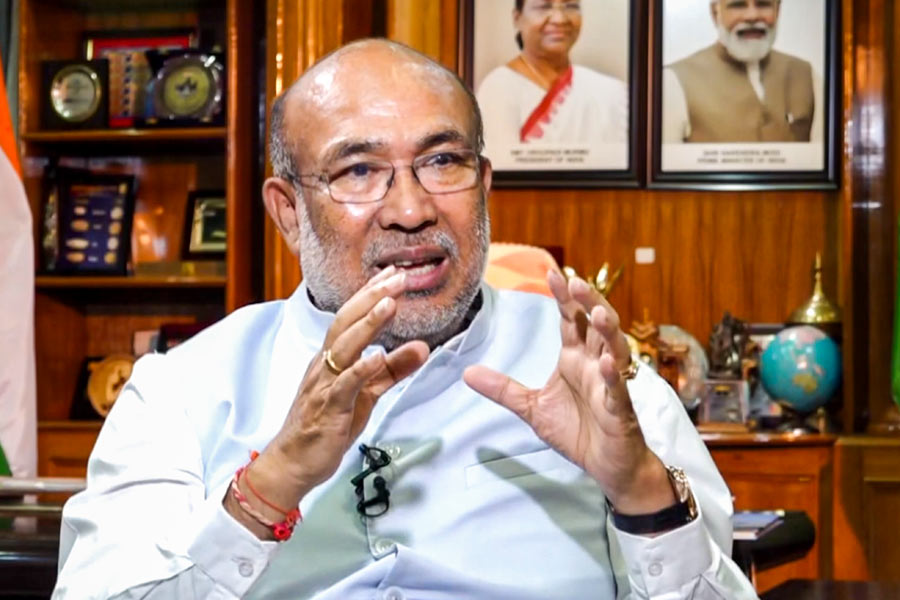The Manipur cabinet on Thursday decided to extend government schemes and benefits to only villages recognised by the state administration, prompting Kuki-Zo organisations to convene a meeting on October 15 to discuss the step.
The cabinet decision came two days after chief minister N. Biren Singh said in Imphal that villages “not recognised by the Government or not registered with the government shall not be provided government benefits like Mahatma Gandhi National Rural Employment Guarantee Scheme, power, water supply...”
Singh had on Tuesday also urged government officers, especially from the revenue and forest departments, to perform their duties with dedication and “within the provision of the Constitution and under the provision of the law like The Manipur Land Revenue and Land Reforms Act and Forest Acts”.
His remark was aimed at checking the setting up of villages in protected areas.
Manipur government spokesperson Sapam Ranjan said after Thursday’s cabinet meeting that “MNREGA, PM Surya Ghar or any other benefits” would be henceforth extended to only recognised villages, not to unrecognised villages.
Ranjan said villages couldn’t be set up without following rules.
Singh had posted on X on April 29: “Unnatural growth of 996 New Villages Due to Illegal Immigration: Threat to Indigenous People and National Security...”
“We’re confronting a serious issue within our nation, especially in Manipur, where several new villages have emerged due to a massive influx of illegal immigrants from Myanmar since 2006 till date,” he added.
According to reports, most of the 966 villages are located in Kangpokpi, Churachandpur, Tengnoupal and Chandel with a few in Senapati, Ukhrul and Pherzawl districts. They are either Kuki-Zo or Naga majority districts.
The Chin people of Myanmar and the Kuki-Zos of Manipur share the same ethnicity. The Nagas living on either side of the international border in Manipur also share family and ethnic ties.
A Kuki-Zo activist told The Telegraph that a meeting of civil society organisations and village chiefs would be convened in Kuki-Zo majority Kangpokpi on Tuesday to discuss the cabinet decision which came amid the ongoing conflict between the Kuki-Zos and the Meiteis.
The strife has left at least 237 dead and over 60,000 displaced from both the communities since May 3, 2023.
On Sunday, the Kuki Chiefs’ Association, Manipur (KCAM), had condemned
“the recent order from
the Manipur State Government, Department of Tribal Affairs and Hills, demanding detailed documentation of our villages and hills from 1964 to the present”.
It questioned the timing of the order, which was “particularly troubling, coming at a moment when the Kuki-Zo people are facing existential threats from the radicalised and secessionist Meiteis”.
In a press statement, the KCAM had also called for “strict compliance with our directive: no Kuki-Zo chief shall submit any documents or papers to the state government that seek to undermine our traditional governance and the rights inherent to it”.
Sources said the move may face resistance during the survey/documentation stage.










